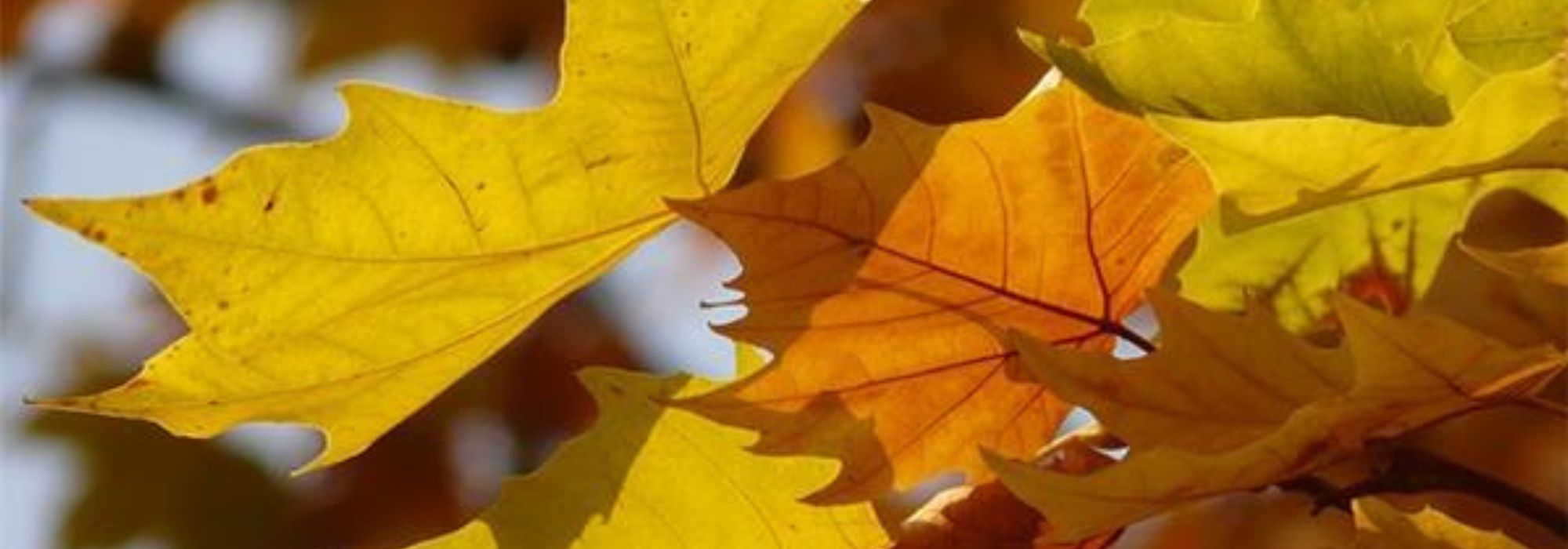
Plane Tree: Planting, Pruning, and Care
Contents
The plane tree in a few words
- The plane tree is a shade tree with imposing dimensions that withstands drought well.
- Its massive trunk with decorative marbling is unmistakable.
- Its broad deciduous leaves are beautifully lobed and turn yellow at the end of the season.
- Hardy and long-lived, it thrives in full sun in any ordinary, deep soil.
- The hairs present on its leaves and fruits can cause certain allergies.
The word from our expert
The plane tree is a majestic tree with impressive dimensions, appreciated for the dense shade it provides and for its trunk with colourful and decorative marbling. Reaching heights of 30 to 40 metres, there are also “dwarf” versions, such as Platanus acerifolia ‘Alphen’s Globe’, with a globose crown that does not exceed 10m. Its large lobed and deeply cut leaves are reminiscent of those of certain maples. Green in season, they turn yellow before falling. Widely used in avenues and urban settings, it also makes a striking solitary specimen, left to grow freely. Tolerating severe pruning very well, it can be shaped into verdant parasols. Its flowering is inconspicuous, and its spherical fruits, ranging from green to light brown, are covered in tiny hairs, which can cause allergies in some people. Fast-growing and drought-resistant once established, this is a hardy tree that thrives in sunlight, warmth, and deep soils. Its powerful roots can be problematic if planted too close to buildings. Susceptible to certain pests and diseases, it is nonetheless capable of living for several hundred years.
Discover this majestic tree with its impressive stature!
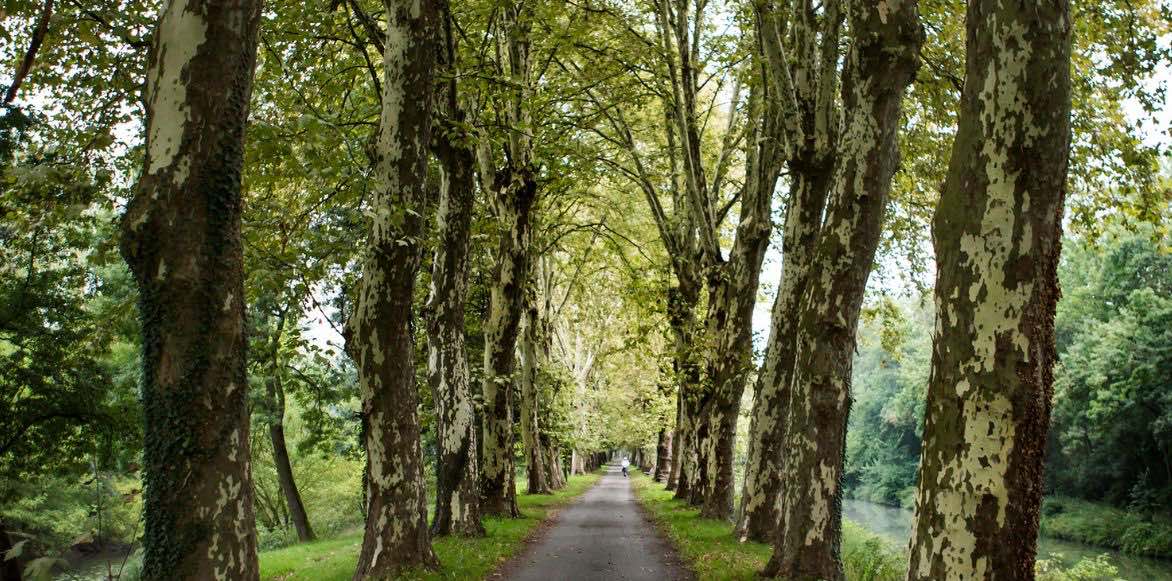
Description and Botany
Botanical data
- Latin name Platanus
- Family Platanaceae
- Common name London plane, Maple-leaved plane
- Flowering Spring (insignificant)
- Height 10m x 6m to 40m x 25m
- Exposure sun, partial shade
- Soil type any ordinary and deep soil
- Hardiness -20°C to -25°C
The plane tree is a well-known tree and often used for the dense and refreshing shade it provides. It is the sole representative in the Platanaceae family and comes in around 8 species, only a few of which are commercially available today. Its botanical name Platanus comes from the Greek “platanos,” derived from “platos,” meaning ‘broad and wide,’ due to its dimensions, which can be impressive. Apart from the California sycamore (Platanus racemosa), which grows in the mountains of that state, the plane tree originates from various regions of the world depending on the species. The cradle of the American sycamore (Platanus occidentalis) lies in the eastern part of North America and the northeastern part of Central America, while the Oriental plane (Platanus orientalis) comes from southeastern Europe. Through imports and hybridisations, they gave rise in the 17th century to a hybrid species known interchangeably as Platanus (x) hybrida, Platanus (x) hispanica, or Platanus (x) acerifolia. Various varieties have emerged from this, such as Platanus ‘Malburg’ or Platanus ‘El Gordo’, to name just a few. More commonly referred to as the London plane or maple-leaved plane, it is primarily this tree that is abundantly found along our roadsides, navigation canals, or severely pruned to shade, for example, certain terraces and squares around the Mediterranean. In the wild, it grows spontaneously along watercourses and in deep valleys.
With rapid growth, it can easily reach, or even exceed, 30 to 40 metres in height with a spread of 15 to 25 metres, making it naturally suited to large spaces. However, there are cultivars with more modest growth that can be accommodated in our gardens, such as Platanus (x) acerifolia ‘Alphen’s Globe’, which does not exceed 10m x 6m and whose crown forms a ball.
With exceptional longevity, this tree can live for several hundred, or even several thousand, years, and its massive trunk reaches considerable proportions. For example, in Kos, a small Greek town on the island of the same name in the Aegean Sea, stands the Hippocrates Plane Tree. It is a Platanus orientalis estimated to be between 500 and nearly 2,000 years old, depending on sources, with a trunk measuring 14 metres in circumference. Generally featuring a single, straight, and massive trunk, the bark is more or less grey to beige and peels in irregular patches called rhytidomes, revealing shades ranging from green to yellow, with tones of pink and brown. This marbled effect is easily recognisable and represents a decorative asset. The main branches are also sturdy and straight when the tree grows freely. The deciduous foliage consists of large leaves that can reach 20 cm in length. Alternate, they are borne on a long petiole. Palmatilobate, they are divided into 3 to 7 lobes, more or less incised and dentate, giving them a visual resemblance to some maples. Young leaves are pubescent, meaning they are covered with fine hairs, which can pose a risk for allergy sufferers. Green in season, they turn yellow and then brown before falling. Particularly tough, the plane tree leaf takes a long time to decompose.

The beautiful bark of plane trees: Platanus acerifolia ‘Alphen’s Globe’, Platanus hispanica ‘Malburg’, Platanus acerifolia, Platanus hispanica ‘El Gordo’
Towards the end of spring, the unremarkable flowering occurs, in the form of numerous small flowers grouped into round heads borne on long, pendulous peduncles. Monoecious, a single tree bears both male flowers (green in colour) and female flowers (red). The latter later give rise to fruits called achenes, which form small balls, initially green and then light brown. Like the leaves, these fruits are covered with a multitude of tiny hairs that, when they fall to the ground, form a sort of yellowish down at the base of the tree. These hairs are particularly irritating, and sensitive individuals may experience allergic reactions in the eyes or respiratory system.
The plane tree’s root system is powerful and can cause damage if the tree is planted too close to a structure. Its hard, dense, and light-coloured wood offers good resistance to moisture and is used for various purposes: cabinet-making, shipbuilding, or the production of plywood panels. It also makes for interesting firewood. The leaves, like the bark, are said to have astringent properties and virtues.
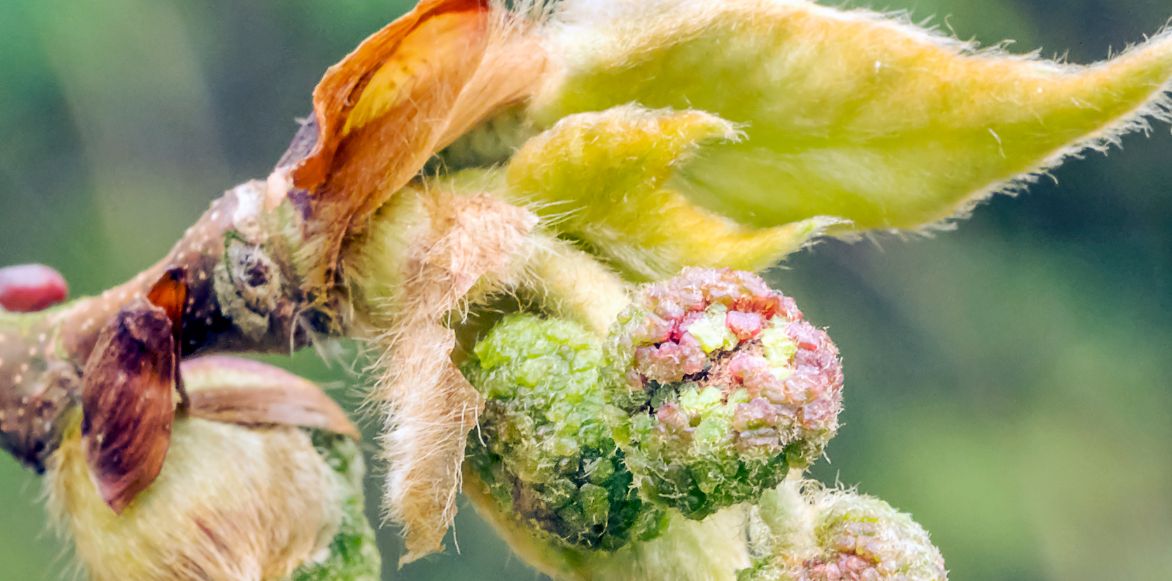
Emerging leaves and fruits on a Platanus orientalis
The different species and varieties
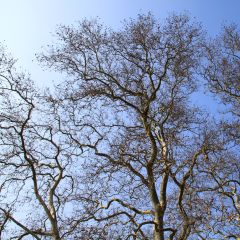
Platanus x hispanica
- Flowering time June, July
- Height at maturity 30 m
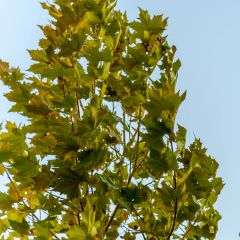
Platanus x hispanica Malburg
- Flowering time June, July
- Height at maturity 25 m
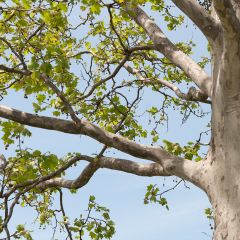
Platanus x hispanica El Gordo
- Flowering time June, July
- Height at maturity 35 m
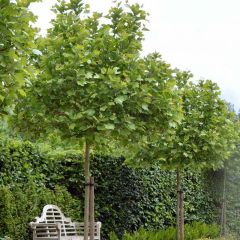
Platanus x hispanica Alphens Globe
- Flowering time June, July
- Height at maturity 10 m
Discover other Platanus
View all →Available in 1 sizes
Available in 1 sizes
Available in 3 sizes
Available in 1 sizes
Available in 1 sizes
Available in 1 sizes
Planting
Where to Plant?
A lover of sun and warmth, the plane tree also thrives in partial shade in any ordinary, deep soil, even chalky. While a mature specimen can withstand hot, dry summers, it prefers well-drained soil that doesn’t dry out completely. Resistant to pollution, it is often used as a street tree in some cities. Its hardiness, ranging from -20°C to -25°C, makes it suitable for most regions, except in very cold mountainous areas. Platanus racemosa, on the other hand, is more sensitive to cold and struggles with harsh, prolonged winters.
When to Plant?
The best planting period remains autumn in most regions. In areas with particularly cold and wet winters, spring planting is preferable but requires regular monitoring of water supply depending on weather conditions.
How to Plant?
1) Soak the root ball in a large volume of water to saturate the substrate.
2) Meanwhile, dig a hole at least twice as wide and deep as the container holding your young plant.
3) Add a spadeful or bucket of compost and one or two handfuls of crushed horn to the excavated soil and mix well.
4) Remove the plane tree from its pot and place it in the centre of the hole, ensuring the top of the root ball is level with the ground. It’s better to plant slightly higher than the surrounding soil, as the level will settle after compaction and watering.
5) In windy areas, install a stake (at the same time as the root ball) on the side opposite the prevailing winds and secure the trunk without tightening, using a flexible tie.
6) Water generously, even if it’s raining. 10 to 15 litres at planting time is beneficial.
7) Mulch around the base to a depth of about 10 centimetres (straw, grass clippings, wood chips, flax straw, cocoa shells, or any other organic mulch of your choice).
→ Subsequently, monitor watering to ensure the soil doesn’t dry out and your plane tree establishes well. If needed, water deeply once a week rather than frequently in small amounts. Once mature, it will rely on natural rainfall. Artificial fertilisation is unnecessary, but replenish organic mulch regularly during the first few years.
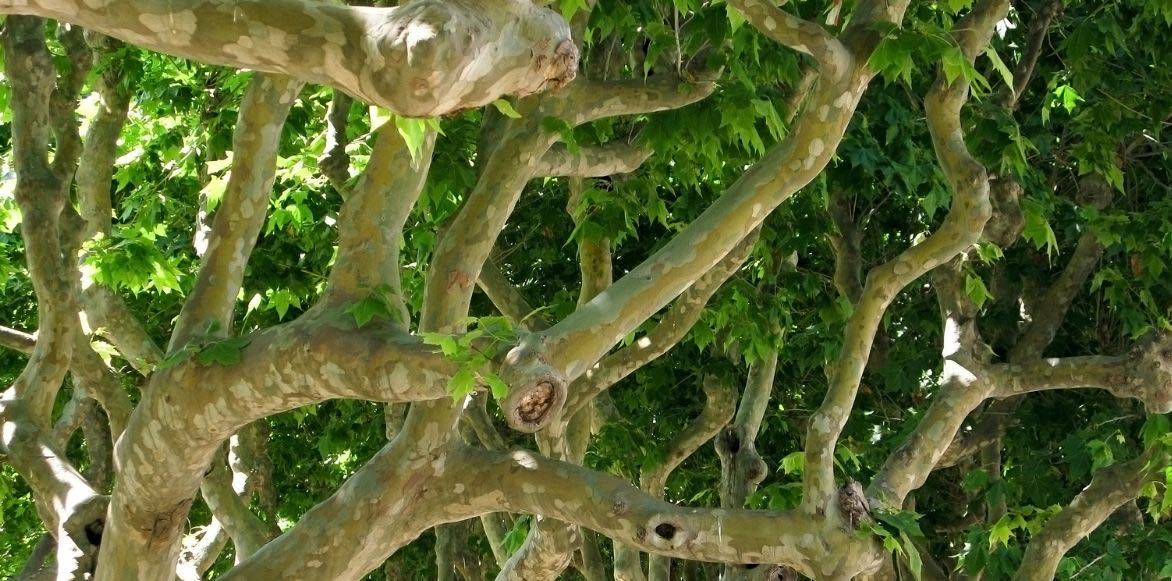
Beautiful intertwined branches (Platanus acerifolia)
Pruning and Maintenance
The plane tree tolerates pruning perfectly, and many specimens are severely pruned to reduce wind resistance. However, repeated pruning can create entry points for certain pathogenous elements, the most common of which are anthracnose and canker. An insect known as the Sycamore Lace Bug (Corythucha ciliata) can also attack the leaves and weaken its host, leading to the death of the tree in the most severe cases.
Maintenance Pruning
The plane tree does not require specific maintenance or pruning. If necessary, in winter and on young, easily accessible specimens, remove poorly oriented branches that grow inward, as well as dead wood, to shape its silhouette. For mature and very large specimens, it may be necessary to cut certain branches to limit wind resistance. In this case, call in a professional arborist. Only they are equipped and trained to carry out reasoned and well-executed pruning on such trees.
Parasol Pruning
The plane tree lends itself well to parasol or arbour pruning to provide shelter from the sun. Again, intervene in winter to clearly identify the branch structure.
1) Allow the trunk to grow to the desired height.
2) Cut all secondary branches that emerge from the trunk up to the defined height. Use sharp and clean tools.
3) Select the scaffold branches. Choose 5 to 7 branches from those that grow most horizontally, ensuring their distribution is as balanced as possible, and remove the others flush with the trunk.
4) Cut the crown or leading shoot of the tree at an angle to prevent water stagnation at the cut.
5) On the scaffold branches, cut all small branches that grow vertically or are poorly placed.
6) Subsequently, remove any new branches that grow upward or downward to encourage the scaffold branches to lengthen and thicken, as well as shoots that attempt to reform a leading shoot at the top of the trunk.
→ Note that you will need to be patient before achieving a parasol of beautiful dimensions and truly functional.
Potential Diseases and Parasitic Threats to Plane Trees
Anthracnose
More resistant than its relatives, Platanus (x) acerifolia can still be affected by anthracnose. This fungal disease is caused by a fungus, Gnomonia vegeta, which can attack all the cell of the tree. It develops mainly in spring, under the influence of coolness and humidity, and tends to become less noticeable when heat and dryness return, ultimately having little worrying impact on mature specimens. Regions such as those around the Mediterranean offer less favourable conditions for the development of this fungus. When affected, the leaf of the plane tree turn brown and fall prematurely. Sometimes, certain branch may wither. Mature specimens produce new foliage when the weather becomes drier and warmer. To limit the appearance and development of anthracnose, avoid large applications of nitrogen fertilisers, which weaken the tissues, and refrain from watering the foliage. Collect the leaf and dispose of them to avoid creating a contamination cycle. For young plant, a copper treatment or a horsetail decoction can be applied as a preventive measure.
→ To learn more, read our article on Anthracnose.
Stained Canker of Plane Trees
Stained canker of plane trees is a far more dramatic condition and causes the death and felling of many trees each year, to the extent that a prefectoral order is issued in the affected departments. The culprit is another fungus, Ceratocystis platani, which lodges in the vessels and feeds on the sap of its host. Once obstructed, these vessels can no longer transport the sap, leading to the drying out and death of the plant. Highly contagious, this disease spreads rapidly to the surrounding population. Warning signs appear as lesions on the trunk and branch, coloured blue-black or purple, nicknamed “blue flames”. The bark dries out, the foliage turns yellow, and the tree dies within just a few months. Incurable, this disease requires the tree to be felled as quickly as possible, taking protective measures to avoid contaminating neighbouring trees. To prevent the appearance of this disease, disinfect tools before any intervention and avoid any wounds that could serve as an entry point for the pathogenous element.
Plane Lace Bug
Corythucha ciliata is an insect known by various names: plane lace bug, plane louse, or reticulated plane bug. Measuring 3 to 4 millimetres in length, it is cream-white in colour. Its transparent wing are white and appear woven like embroidery. A black spot is visible on the front wing. This insect thrives in hot, dry weather and is particularly active in late spring and summer. The female lays numerous egg, mostly along the central vein of the leaf. Once hatched, the larvae, which feed on the sap, disperse throughout the foliage. Symptoms may include discolouration of the leaf, which turn yellow and may eventually fall, and increased production of honeydew that drips from the branch. Weakened, the tree becomes more susceptible to other pathogenous elements, particularly anthracnose and stained canker. While chemical treatments exist, at Promesse de Fleurs, we encourage you to opt for more environmentally friendly solutions. The use of nematodes (Steinernema) and lacewings (Chrysoperla), both predators of the plane lace bug, yields good curative results. To prevent the development of this insect, remove, among other things, peeling bark in late autumn to prevent the insect from sheltering underneath during the colder months.
→ To learn more, read our article on the plane lace bug.
Multiply
The plane tree propagates easily by propagation by cuttings. Proceed in autumn, around October.
1) Take heel cuttings. This involves a piece of the current year’s branch, about 20 cm long, “ripened” (meaning it has started to lignify and turn into harder wood) at the end of which you keep a small piece of bark where it was attached.
2) Plant your cutting in a container deep enough to bury it two-thirds of the way.
3) Use a light and well-draining substrate, made of equal parts compost and coarse sand.
4) Water generously, without disturbing the cutting.
5) Place under shelter until the following autumn.
6) Repot into an individual pot and let your young plant grow for another year, then plant it in the ground the following autumn.
Associate
The plane tree is a majestic tree that, if left to grow freely, reaches impressive dimensions. Indeed, it can grow to heights of 30 to 40 metres! Such use is therefore reserved for parks and very large gardens, where it can be planted as a standalone specimen as a remarkable feature or in rows to frame a grand avenue.
The ultimate shade tree, it is sometimes pruned into a parasol shape to create a sheltered area for resting or dining away from the sun’s intensity. When managed this way, it can be kept to more reasonable proportions. Finally, Platanus acerifolia ‘Alphen’s Globe’ is a variety that could be described as dwarf, as it reaches only about ten metres in height. Its crown develops into a ball shape, adding a somewhat formal touch to a garden.
You can plant large swathes of early-flowering bulbs beneath your plane tree to create a colourful carpet with stunning effect. Daffodils, tulips, wild garlic, and Cyclamen coum brighten spring with their sparkling corollas. For summer and autumn, consider Cyclamen hederifolium or Cyclamen cilicicum.
For perennials, certain geraniums like Geranium macrorrhizum or Geranium nodosum thrive in the shade of large trees, as do Pachysandra terminalis (in soil that isn’t too dry), periwinkle, or ivy.
In a more formal garden, why not try dwarf bamboos like Sasa or Pleioblastus, or, if the soil remains moist, Hosta, ferns, or Hakonechloa.
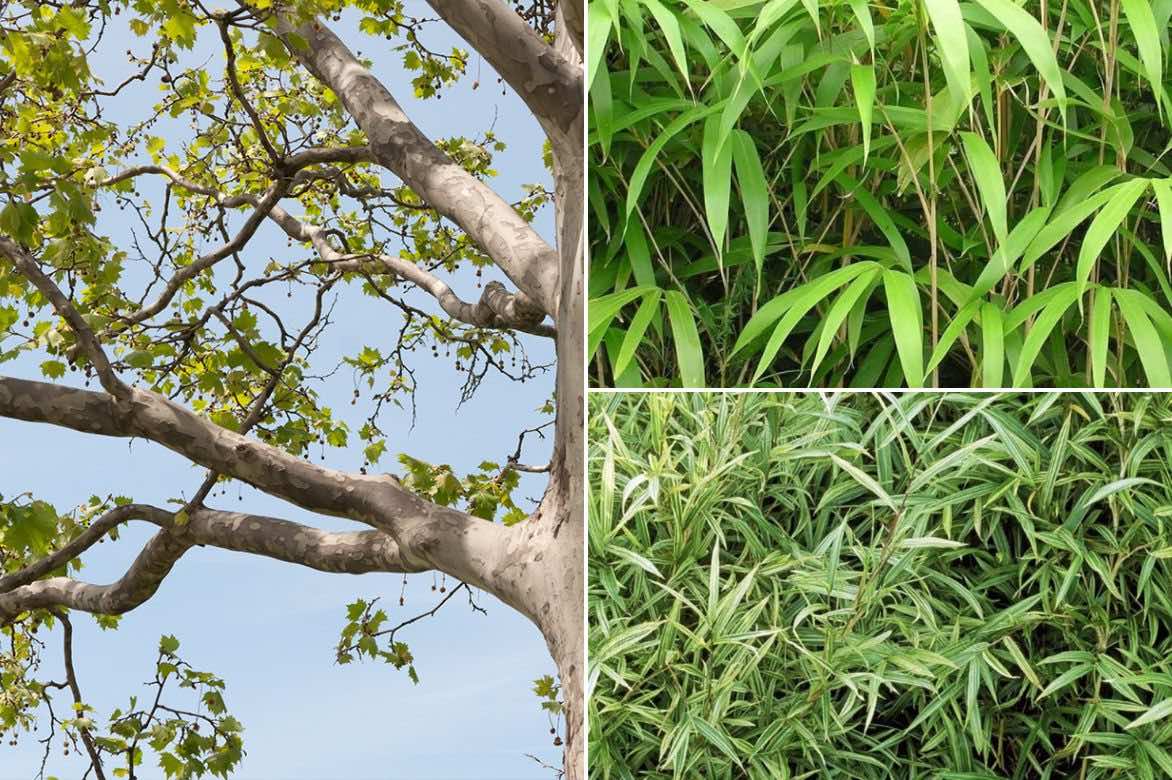
A Platanus hispanica ‘El Gordo’ with bamboos: Pseudosasa japonica at the top and Pleioblastus chino ‘Elegantissimus’ at the bottom
For bushes, Hydrangea appreciate the shade provided by their neighbour, as do Japanese maples, Japanese andromedas, Aucuba, camellias, or Fatsia, depending on the type of soil you can offer them.
The leaves of the plane tree turn yellow in autumn. Enhance this effect by pairing it with companions whose foliage ignites during this season, such as maples, Ginkgo, or Liquidambar for large trees, or Mollis azaleas, winged spindle, Hydrangea quercifolia, serviceberry, Cotinus, or certain dogwoods for bushes.
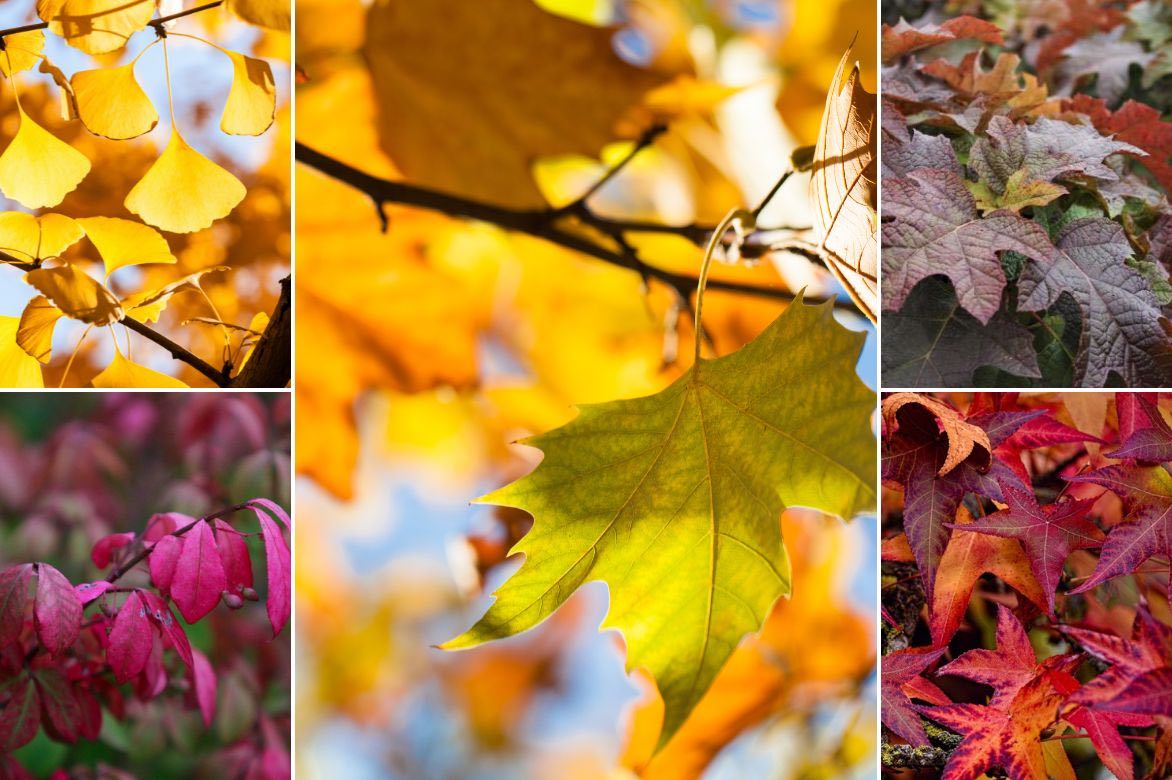
The beautiful autumn foliage of the plane tree is surrounded by the yellow of Ginkgo biloba, the deep pink of winged spindle, the glowing orange of Liquidambar, and the brown of an Hydrangea quercifolia
Take advantage of the decorative marbled bark of the plane tree to create a colourful winter display. Pair it with the immaculate white of a Himalayan birch, the amber-copper of a Prunus ‘Amber Beauty’, the cinnamon bark of an Acer griseum, the mahogany of a Tibetan cherry, or the equally marbled bark of a Stewartia pseudocamellia. Complete the scene with the yellow, red, or fiery orange stems of some ornamental dogwoods and a few clumps of hellebores for mid-winter flowering.
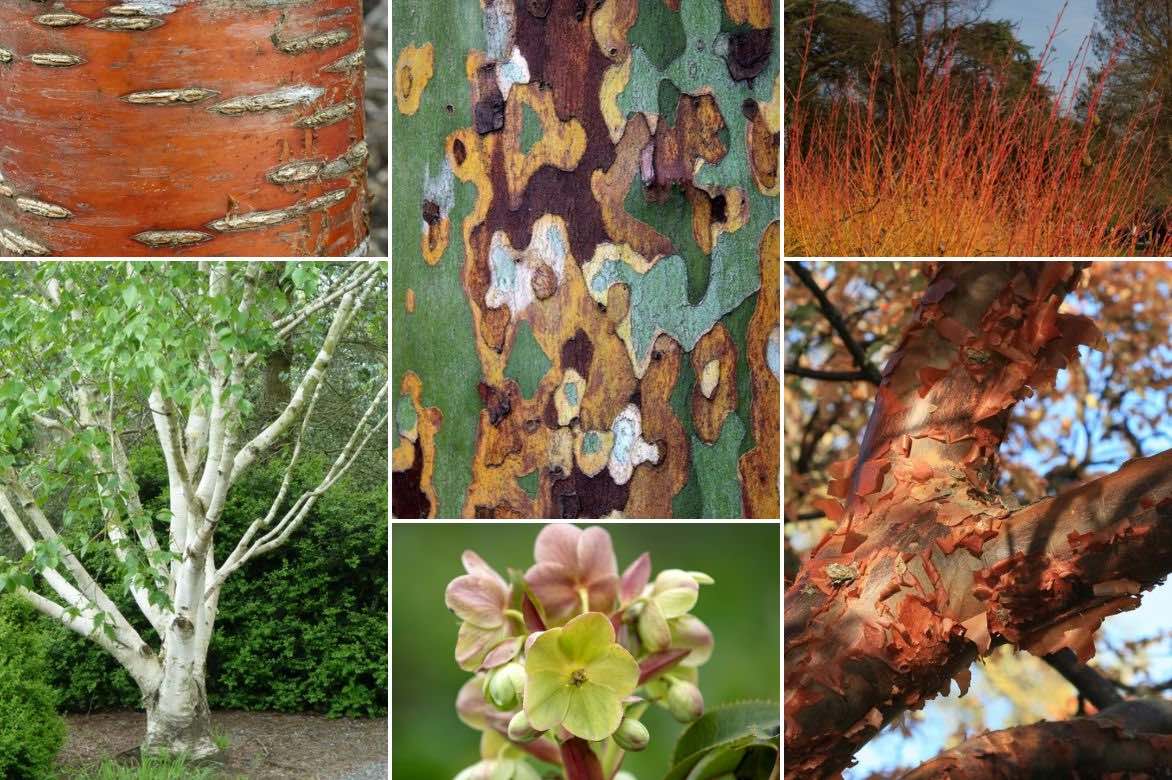
A winter tableau featuring the amber bark of a Prunus ‘Amber Beauty’, the white bark of a Betula utilis jacquemontii, and the exfoliating bark of an Acer griseum. Add the flame-coloured bare stems of a Cornus ‘Winterflame’ and a few clumps of hellebores.
To go further...
- Discover our selection of shade trees for large gardens.
- A selection of trees to create shade in a small space.
- Which plants to choose for shading a terrace?
- Some remarkable trees to plant in a park.
- Subscribe!
- Contents




































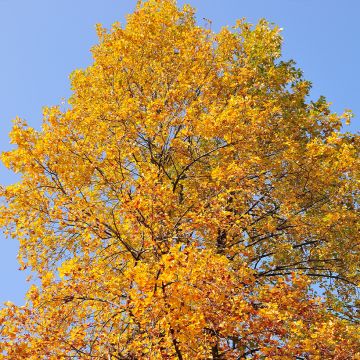
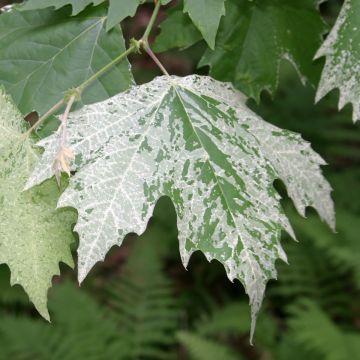

Comments